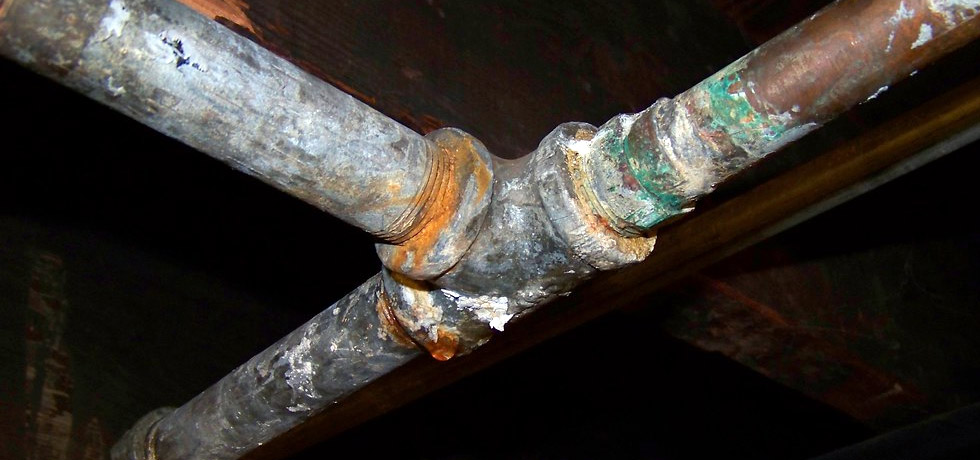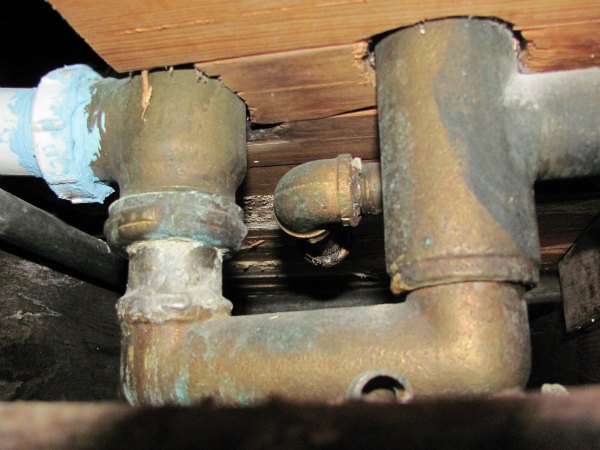A Homeowner’s Guide to Plumbing Issues in Older Homes
A Homeowner’s Guide to Plumbing Issues in Older Homes
Blog Article
The article author is making several great pointers relating to Plumbing Issues in Older Properties and How to Fix Them in general in this article directly below.

Older homes often come with beauty, character, and background, however they can also bring a host of pipes concerns. Whether you're managing aging pipelines, low water stress, or leaks, understanding exactly how to attend to these common troubles is crucial to maintaining a safe and useful home. In this guide, we'll check out the typical pipes challenges dealt with by older homes and offer sensible options to maintain your plumbing in leading shape.
Comprehending Common Pipes Concerns
Aging Pipes
Among the most typical issues in older homes is maturing pipelines. Depending upon the period in which your home was built, the pipes could be made from materials that have actually deteriorated gradually, such as galvanized steel, cast iron, or perhaps lead. These materials can rust, come to be brittle, or create leaks, resulting in water damages and possible health hazards.
Low Water Stress
If you're experiencing low water pressure, maybe as a result of mineral deposits, rust inside the pipelines, or old components that are no longer operating effectively. This can be a major trouble, especially in areas like showers and sinks.
Dripping Pipelines
Leaks are one more regular concern in older homes, frequently brought on by rusty or damaged pipelines. Even tiny leakages can bring about considerable water damages, mold and mildew development, and raised water bills if not addressed immediately.
Obsolete Fixtures
Outdated plumbing components such as taps, commodes, and showerheads not just look old however may likewise be less efficient, prone to leaks, or incompatible with modern plumbing criteria.
Pipe Rust
Rust is a common trouble in older pipes, particularly those made from galvanized steel or cast iron. Corroded pipes can limit water circulation, create discoloration, and ultimately bring about leaks or pipe ruptureds.
Analyzing the Problem of Your Pipes
Checking Visible Pipelines
Beginning by inspecting any kind of noticeable pipes in your home, such as those in basements, crawl spaces, or under sinks. Search for signs of rust, leakages, or rust, which can indicate underlying concerns.
Looking for Leaks
Check for leaks by inspecting locations around taps, bathrooms, and under sinks. You can also check your water meter prior to and after a duration of no water utilize to find concealed leaks.
Water Quality Screening
Older pipes can impact the quality of your water. Conduct a water quality examination to check for contaminants such as lead, corrosion, or other contaminations that might be presented by maturing pipelines.
Solutions for Typical Plumbing Concerns
Changing Aging Pipes
If your home has old, deteriorating pipelines, think about changing them with contemporary materials like copper or PEX. This can be a significant financial investment, however it will stop future issues and boost the safety and security and dependability of your plumbing system.
Taking Care Of Low Water Stress
To repair low tide stress, start by cleansing or replacing old fixtures and getting rid of mineral buildup in the pipelines. If the trouble lingers, it might be necessary to replace sections of rusty pipes.
Repairing and Changing Leaking Pipelines
For small leakages, you can use pipe clamps or epoxy putty as a short-term repair. Nevertheless, it's finest to replace leaking pipelines totally to avoid additional damages.
Upgrading Components
Upgrading old fixtures to modern, water-efficient designs can boost your home's plumbing performance and lower water consumption. Try to find fixtures with the WaterSense label for the very best efficiency.
Taking Care Of Pipeline Corrosion
If your pipes are worn away, replacing them with corrosion-resistant materials like copper, PVC, or PEX is the most effective solution. Routine examinations and water quality maintenance can aid prevent even more deterioration.
When to Call a Professional
While some plumbing concerns can be taken care of with DIY solutions, there are times when it's best to hire an expert. If you're managing major leaks, substantial deterioration, or are unsure about the condition of your pipes, a qualified plumbing can offer professional assessment and repair.
Preventive Upkeep Tips
Regular Inspections
On a regular basis evaluate your pipes system for indicators of damage. Capturing concerns early can protect against costly repair work down the line.
Water Pressure Policy
Ensure your water pressure is within the recommended range to avoid emphasizing your pipelines and fixtures. A plumbing technician can set up a pressure regulator if required.
Water Quality Maintenance
Mount water filters or conditioners if your water high quality is poor. This can safeguard your pipes and components from damage caused by hard water or impurities.
Aggressive Pipeline Replacement
If your home has older pipes, consider proactive substitute prior to major issues emerge. This can save you from emergency situation fixings and water damages.
Conclusion
Dealing with pipes problems in older homes needs a combination of vigilance, preventative upkeep, and timely upgrades. By understanding the usual challenges and understanding when to seek expert assistance, you can guarantee your plumbing system remains useful and trustworthy for many years to come.
Common Plumbing Issues in Older Homes and How to Fix Them
Owning an older home in Australia comes with its unique charm and a set of challenges, especially when it comes to plumbing. The Sunshine Coast has many older properties that can harbour plumbing problems that aren t just inconvenient but potentially costly. Here s a look at some common plumbing issues in older homes and expert advice on how to handle them.
Outdated Piping Materials
Many older homes were built with galvanised steel, cast iron, or even lead pipes, materials that are far from ideal by today s standards. Galvanised pipes are prone to corrosion and clogging, while lead pipes pose serious health risks.
How to Fix:
Replacing old pipes is a job for a professional. Upgrading to copper or PVC piping not only enhances water quality and flow but also increases the property s safety and value. If you suspect your home has outdated materials, a licensed plumber can conduct a thorough inspection and recommend the best course of action.
Corrosion and Pipe Degradation
Over time, exposure to water and minerals can cause pipes to corrode, leading to leaks, bursts, and water contamination. Corrosion is especially common in homes over 50 years old.
How to Fix:
Regular inspections can catch early signs of corrosion. If corrosion is found, the affected section of piping often needs to be replaced. For homes with extensive corrosion, a complete plumbing overhaul might be necessary. It s crucial to consult with a plumbing expert to understand the extent of the issue.
Tree Root Intrusion
Older neighbourhoods usually have mature trees whose roots can intrude into pipe lines, causing blockages or damage. This is particularly problematic for sewer lines, where roots seek out water sources.
How to Fix:
A plumber can use a specialised camera to inspect sewer lines for root intrusion. If roots are a problem, methods like root cutting or hydro-jetting can clear the obstruction. In severe cases, part of the pipe may need replacing. Consider root barriers around the piping to prevent future issues.
Inadequate Water Pressure
Low water pressure in older homes can be due to various factors, including corroded water lines, sediment build-up in pipes, or outdated fixtures.
How to Fix:
First, check if the low pressure is isolated to one area or throughout the house. Replacing old fixtures can sometimes resolve the issue. However, if the problem is more widespread, it might be due to sediment or corrosion. Flushing the system or replacing the affected pipes usually restores normal pressure. Again, a professional assessment is advisable.
Outdated Fixtures
Older homes often feature fixtures that are not only visually dated but functionally inefficient. This includes everything from toilets and taps to showerheads and washing machine hoses.
How to Fix:
Updating these fixtures can improve both water efficiency and the aesthetic appeal of your home. Modern fixtures are designed to conserve water, which can significantly reduce your water bill and lessen your environmental impact.
Conclusion
Maintaining the plumbing in an older home requires a proactive approach. Regular checks and updates are key to preserving these beautiful properties. If you re facing plumbing issues in your older home, it s best to call on experienced professionals like Green & Gold Plumbing & Gas. With the right expertise, even the most daunting plumbing problems can be resolved, ensuring that your home s character is maintained while its functionality is enhanced.
https://gandgplumbing.com.au/common-plumbing-issues-in-older-homes-and-how-to-fix-them/

We hope you enjoyed our excerpt about Common Plumbing Problems in Older Homes. Thank you for taking a few minutes to browse our blog post. Are you aware of another individual who is involved in the topic? Feel free to share it. Thanks so much for going through it.
Book An Appointment Report this page